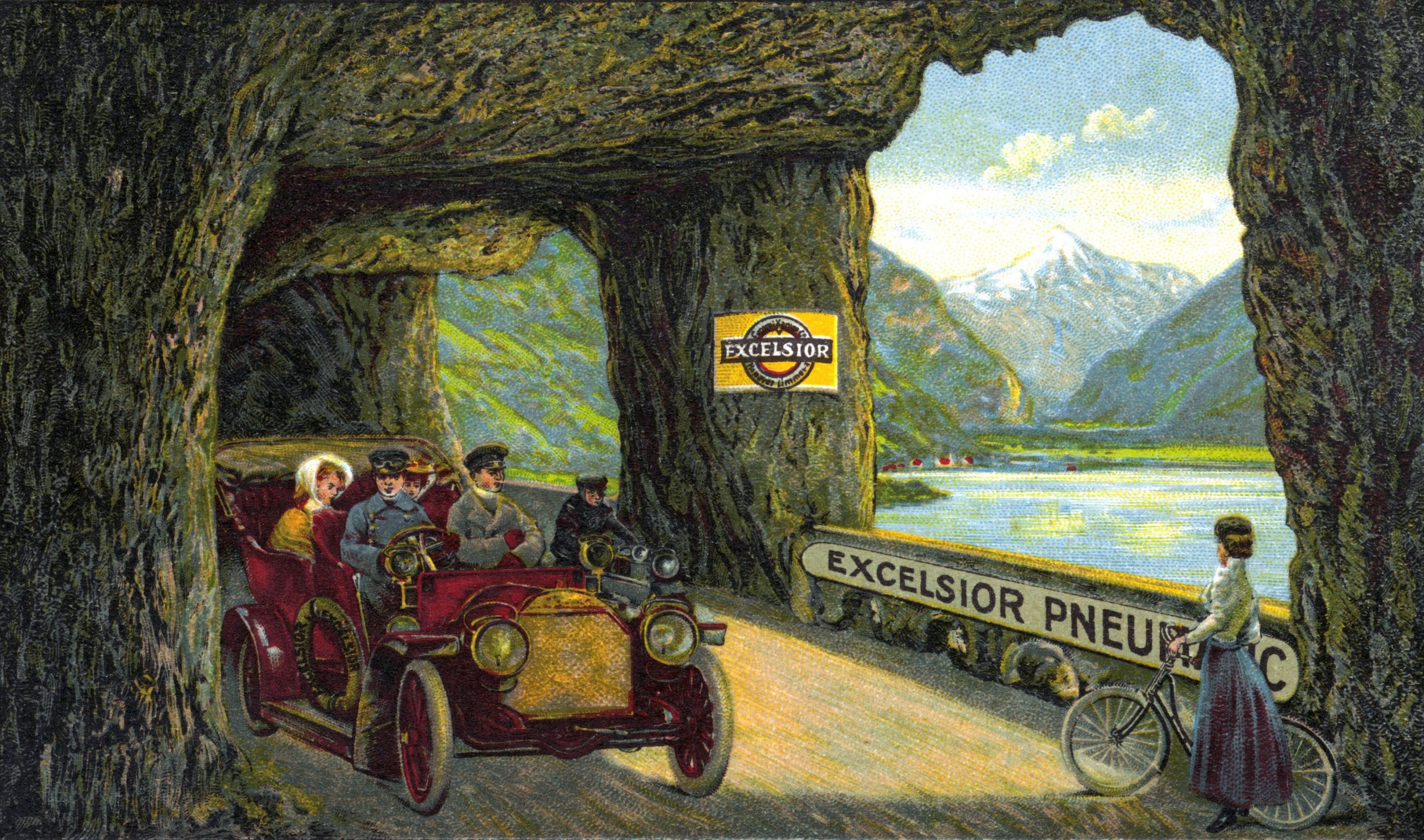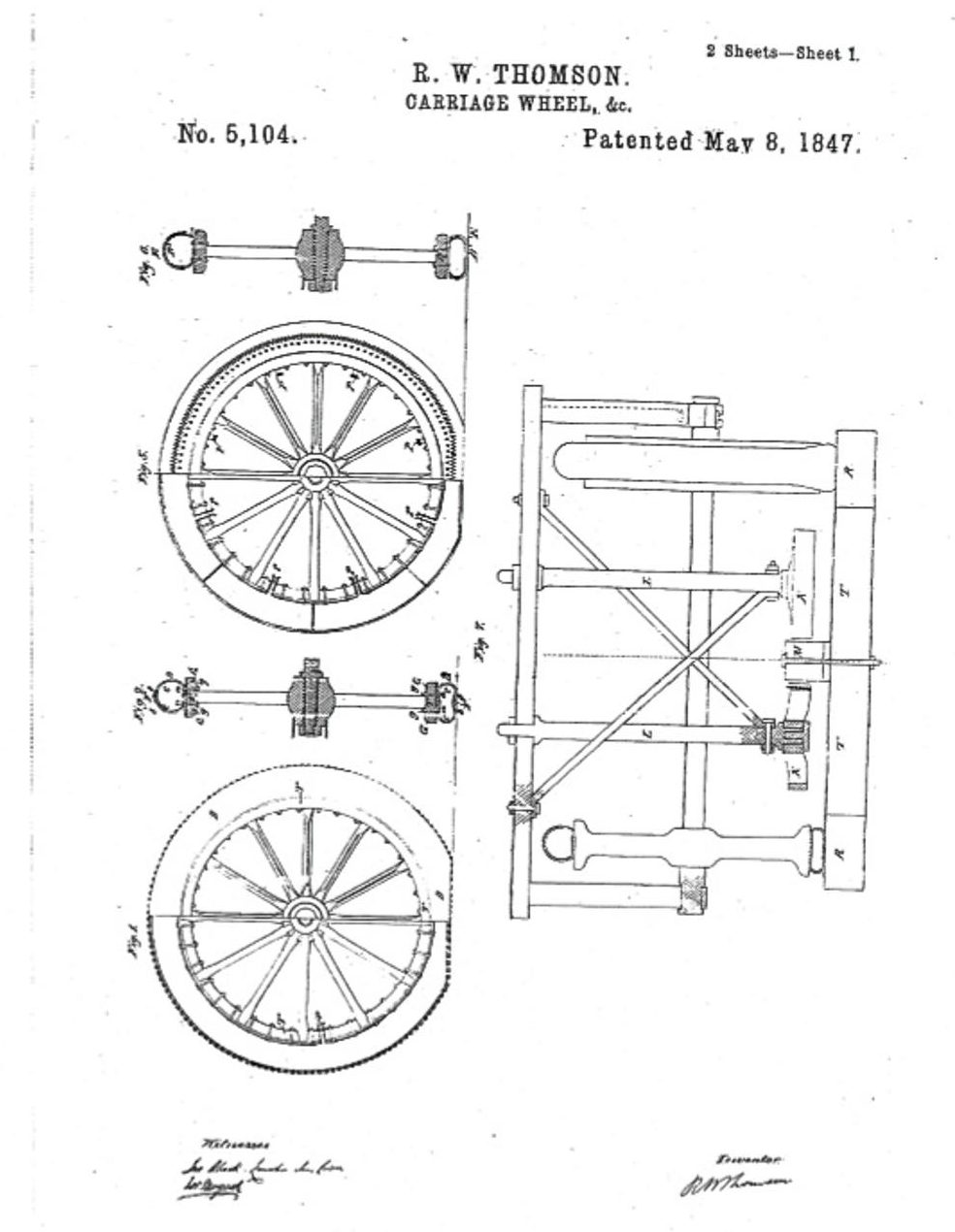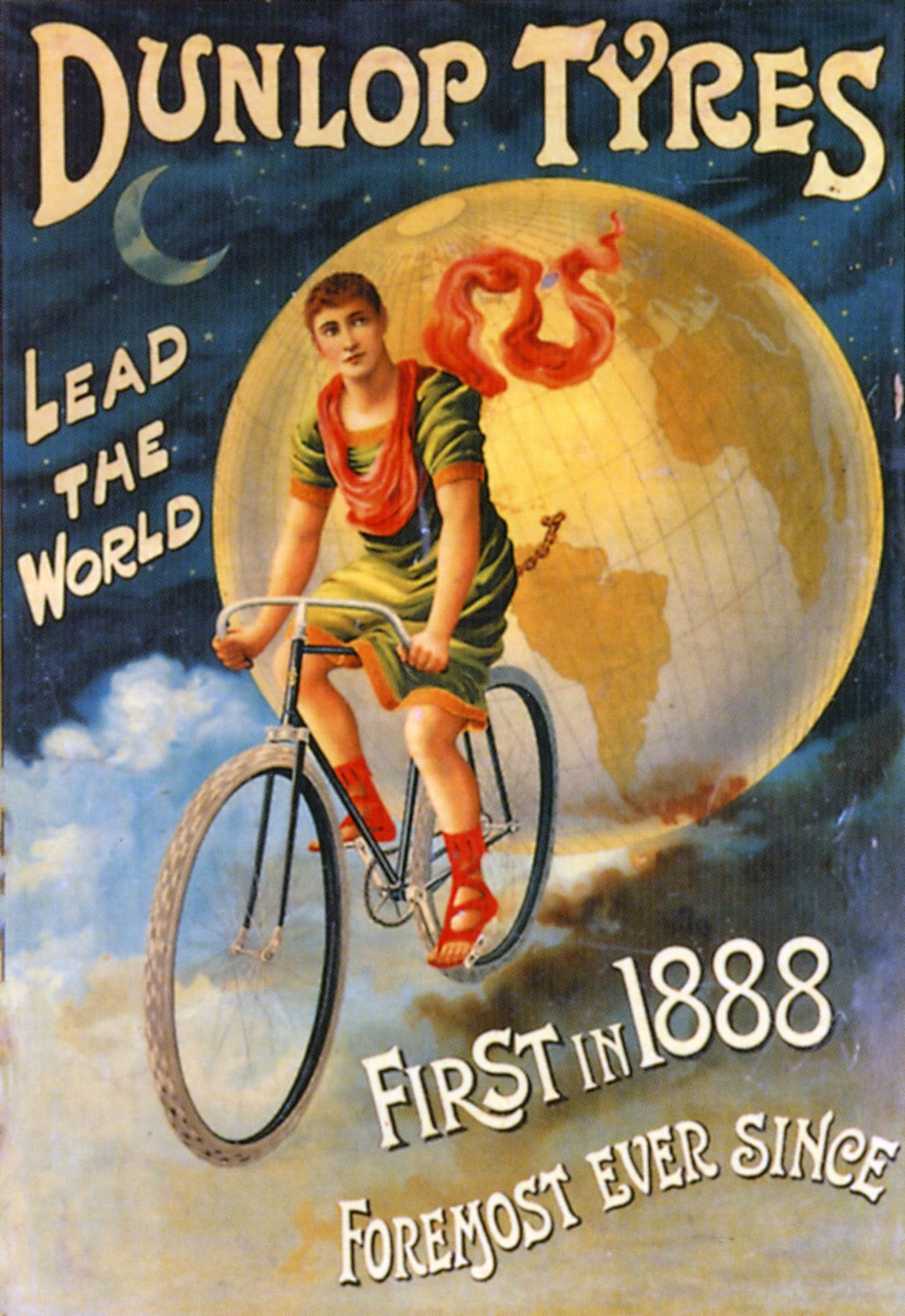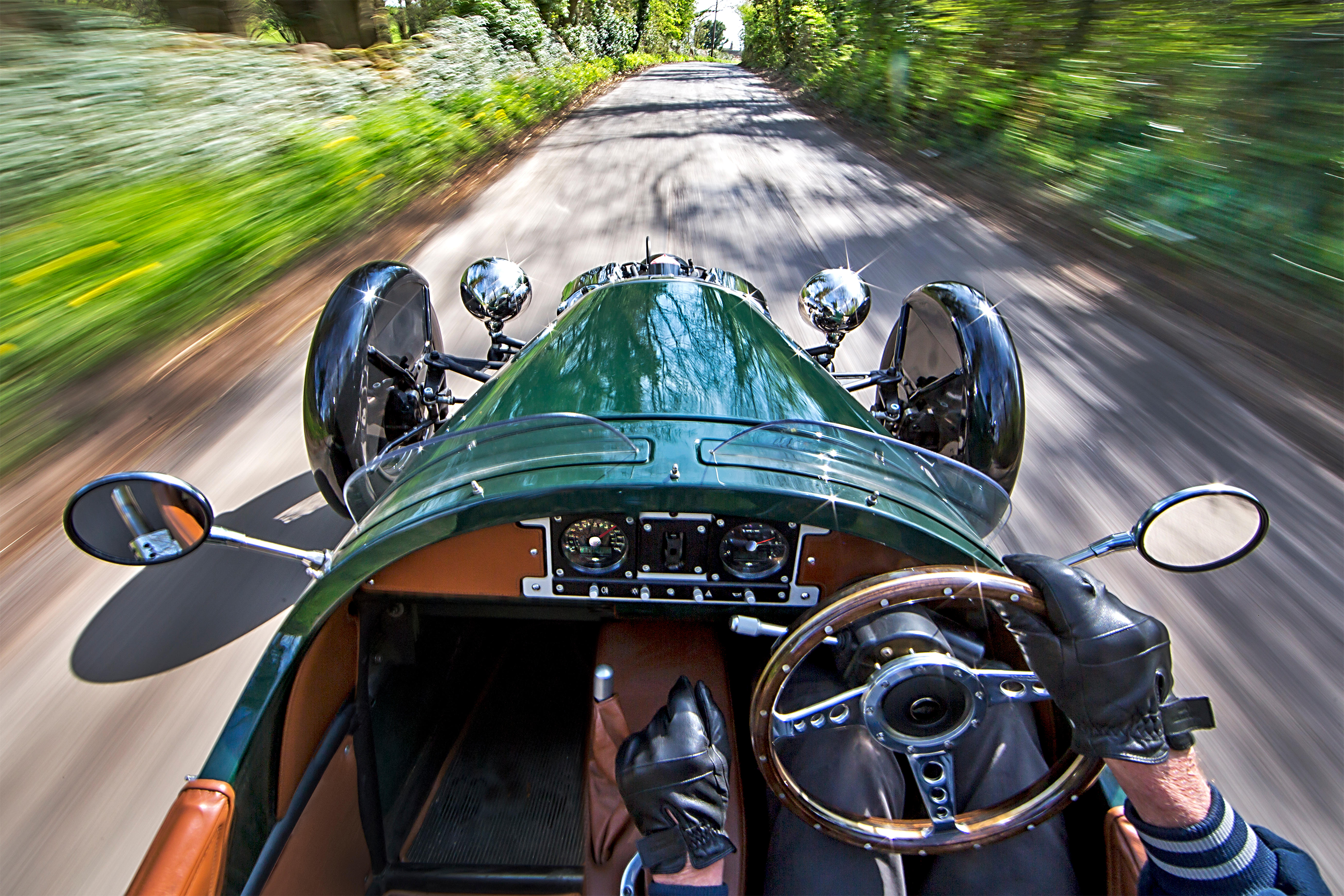Curious Questions: Who invented the pneumatic tyre?
The names of Goodyear, Dunlop, and Michelin are familiar to motorists and cycling enthusiasts alike, but it is thanks to another inventor that we enjoy comfortable rides on inflated rubber tyres. Martin Fone tells a tale of an inventor's extraordinary ingenuity in creating a design that pre-dated its usefulness by several decades.


Transformational as the development of the wheel was, allowing man to travel distances, at speed, haul goods, and harness natural forces such as wind and water, to mechanise agriculture, and food production, curiously, in the story of man’s technological evolution, it came rather late in the day. By the time Sumerian potters began throwing their clay onto rudimentary stone wheels — an early example of which was found in Ur dating to around 3129 BC — humans had already produced metal alloys, built canals and boats, and designed complex musical instruments.
Why that was so has puzzled many. Was it because rolling as a form of locomotion is rarely observed in the natural world, giving man no obvious template to ape? Or was it because the idea of a single wheel only went so far and what was truly revolutionary was the concept of joining two by an axle, requiring a level of precision that the design of tools and the level of carpentry skills were unable to attain until well into the fourth millennium BC?
Whatever the reason, early wagons were narrow with short axles and solid wooden wheels, the idea of creating lighter wheel by hollowing out the wood only gaining traction around 2000 BC. Wooden wheels soon wore out and to enhance their lifespan, leather bands were wrapped around them and, later, metal bands were affixed to the circumference of the wheels, a technique still used today. One thing these prototypical tyres did not offer was the prospect of a comfortable ride.
"Even the grim reaper could not stop him inventing. After his death in 1873, his wife secured for him his fourteenth patent"
What did, though, was rubber, but it took a stroke of good fortune for Charles Goodyear, working at the Eagle India Rubber Company, to make the all-important breakthrough. Working away in his laboratory, he discovered by chance that by combining rubber with sulphur over a hot flame, the sticky, soft material turned into a firm, pliable material. Goodyear patented his vulcanised rubber in 1839 and it quickly became the material of choice for tyres because of its durability and ability to absorb shocks.

As well as that all-important spark of ingenuity a successful inventor needs a healthy slice of good fortune and perfect timing. The footnotes of history are littered with inventors who were ahead of their time and failed to attain the renown they richly deserved. A case in point is Robert William Thomson (1822 – 1873), a son of Stonehaven and a serial inventor.
He cut his inventor’s teeth by improving the design of his mother’s mangle before going on to invent and patent a self-filling fountain pen (1851), a steam traction engine (1867), a device for detonating explosive charges electronically, and a sprung mattress. Even the grim reaper could not stop him. After his death in 1873, Clara, his wife, secured for him his fourteenth patent, for an elastic belt.
Arguably Thomson’s greatest contribution to man’s advancement, although few of us realise it, came as a twenty-three-year-old when he developed what he described in his patent application as ‘a new and useful Improvement in Carriage Wheels’. He claimed that his new design would lessen ‘the power required to draw the carriages, rendering their motion easier, and diminishing the noise they make when in motion’.
Exquisite houses, the beauty of Nature, and how to get the most from your life, straight to your inbox.
Thomson proposed using ‘a hollow belt composed of some air and water tight material such as sulphurised caoutchouc or gutta-percha [types of rubber], and inflating it with air, whereby the wheels will in every part of their revolution present a cushion of air to the ground or rail or track on which they run’. This stretchy belt of rubberised canvas was to be enclosed within a strong outer case of leather and bolted to the wheel.
"Timing is everything and adoption of Thomson’s tyres was hindered by the technological difficulties, expense, and little demand"
‘For common passenger vehicles’, he claimed, ‘the elastic belt will require to be about four of five inches in diameter and to be inflated to such an extent as to keep the tyre of the wheel two and a half or three inches from the ground – a distance which, it is presumed, will be found sufficient to admit of the wheel passing over any stones or other matters projecting beyond the general of any ordinary turnpike road without the solid tyre coming in contact with them’. Thomson even claimed that so effective were his ‘Aerial Wheels’ in providing a smooth ride that springs could be dispensed with.
Thomson secured a UK patent (no 10990) for his pneumatic tyres in 1845 and was granted patent rights in France and, on May 8, 1847, 175 years ago, in the United States (No 5,104). Keen to demonstrate the merits of his tyres, in March 1847 he arranged for two carriages to set off side by side in Regent’s Park. To the astonishment of the sceptical onlookers, the one fitted with Thomson’s ‘Aerial Wheels’ comfortably outpaced the other. Sets were fitted to several horse-drawn carriages and passengers commented favourably on the comfort of the ride and the reduction in noise. One set ran for 1,200 miles without any obvious sign of wear and tear.

Timing, though, is everything and adoption of Thomson’s tyres was hindered by the technological difficulties and expense involved in producing tubes that were thin and strong enough. Also, there was little demand. The emergence of cycling as a popular form of transport was decades away, only kick started by James Starley’s invention of the penny farthing in 1871. In frustration, Thomson turned his energies to other projects, including the production of solid rubber wheels.
One man whose timing was perfect was John Boyd Dunlop, another Scot, although living in Belfast. Watching his son, an enthusiastic cyclist, finding it hard going riding along the cobbled streets of Belfast on a metal-wheeled tricycle, Dunlop’s brainwave was to develop an inflatable rubber tube, which he wrapped in canvas and glued to the wheels. This pneumatic tyre improved the speed and comfort of the ride immeasurably and alive to the opportunities his invention presented to cyclists, in 1888 he applied for and was granted a patent. The Patent Office evidently had overlooked the prior claims of Thomson’s almost identical tyre.
Dunlop’s reprieve was only temporary. As he began to put his tyres into production and they became widely available, Thomson’s patent was unearthed, and Dunlop’s was withdrawn. This allowed the brothers Michelin, Edouard and André, to steal a march on him and supply the nascent motor car manufacturers with pneumatic tyres. Dunlop’s patent difficulties were only resolved after he had made further modifications to his design, putting him on the road to the fame and fortune that had eluded Thomson.

Although the names of Goodyear, Dunlop, and Michelin are familiar to motorists and cycling enthusiasts alike, it is thanks to Thomson that we can enjoy comfortable rides on inflated rubber tyres. His home town of Stonehaven, fittingly, remembers him, holding, each June, a rally of veteran and vintage vehicles to celebrate his genius, an annual fixture since 1968. On the wall of No 9, Market Square is a bronze plaque, presented by the Royal Automobile Club in 1922 to commemorate the centenary of his birth on June 29th. He is buried in Dean Cemetery in Edinburgh.
It would be appropriate in this the bicentennial year of his birth if Thomson found the recognition his ingenuity merited.

Curious Questions: Who made the first proper car journey?
The man who invented the very first motor car didn't think it would be able to survive a long-distance car

Credit: Alamy
Curious Questions: How did a car-mad racing driver come to invent the speed camera?
Speed cameras have been a fixture of British roads for three decades, but they've been around far longer than that.

Credit: Alamy
Curious Questions: Why is walking down the middle of the road called 'jaywalking'?

Curious Questions: How far can you see on a clear day?
A walk to a local hilltop prompts Martin Fone to wonder just how far you can see, assuming perfect atmospheric

Credit: Getty
Curious Questions: Who invented the watering can?
You might take it for granted, but the watering can transformed the art and science of gardening — but who came

Credit: Getty Images
Curious Questions: Why is smell the most evocative of our senses, 'primal, unconscious and instantaneous, capable of stopping a person dead in their tracks'?
Tom Parker Bowles delves into the mysteries of our ability to smell — and ponders what is the best smell of
After graduating in Classics from Trinity College Cambridge and a 38 year career in the financial services sector in the City of London, Martin Fone started blogging and writing on a freelance basis as he slipped into retirement. He has developed a fearless passion for investigating the quirks and oddities of life and discovering the answers to questions most of us never even think to ask. A voracious reader, a keen but distinctly amateur gardener, and a gin enthusiast, Martin lives with his wife in Surrey. He has written five books, the latest of which is More Curious Questions.
